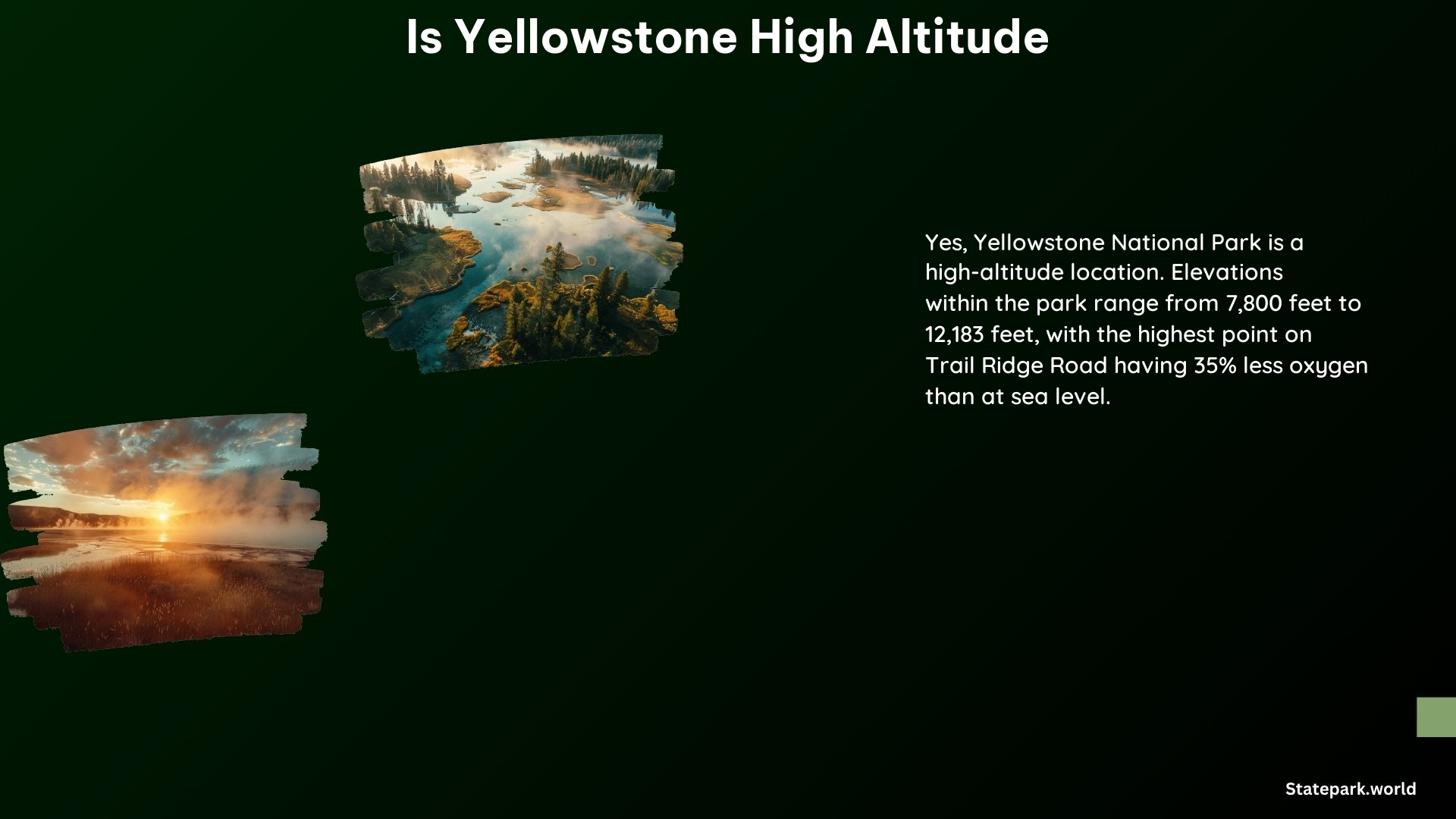Yes, Yellowstone National Park is considered a high-altitude region, with elevations ranging from 7,800 feet to 12,183 feet. This high altitude can pose challenges for visitors, especially those who are not accustomed to such elevations. In this blog post, we’ll explore the impact of Yellowstone’s high altitude on visitors and provide tips to help you enjoy your national park experience.
Understanding Yellowstone’s Altitude
Yellowstone National Park is located primarily in the state of Wyoming, with portions extending into Montana and Idaho. The park’s diverse landscape includes mountains, valleys, lakes, and rivers, all of which contribute to its impressive elevation range.
Key Altitude Points in Yellowstone
- Yellowstone Lake: 7,730 feet (2,356 meters) above sea level
- West Yellowstone: 6,666 feet (2,032 meters) above sea level
- Trail Ridge Road: Highest point in the park at 12,183 feet (3,713 meters)
Altitude Sickness in Yellowstone

Altitude sickness, also known as acute mountain sickness (AMS), is a common concern for visitors to Yellowstone. This condition occurs when the body cannot adapt quickly enough to the lower air pressure and lower oxygen levels at high elevations.
Symptoms of Altitude Sickness
- Headaches
- Nausea
- Fatigue
- Shortness of breath
- Dizziness
- Loss of appetite
Altitude sickness is more likely to occur above 10,000 feet, especially with high exertion levels.
Preventing Altitude Sickness
To minimize the risk of altitude sickness in Yellowstone, it’s important to take the following precautions:
- Hydrate: Drink plenty of water before and during your trip to stay hydrated.
- Take it Easy: Avoid strenuous activities for the first 24 hours to allow your body to acclimate.
- Get Enough Sleep: Ensure you get sufficient rest to help your body adjust.
- Avoid Excessive Alcohol: Limit alcohol consumption, as its effects can be more pronounced at high altitudes.
- Consider Supplements: Some products, like Zaca’s High Altitude Savior PLUS, can help alleviate symptoms.
How High Altitude Affects Visitors
The high altitude of Yellowstone can have a significant impact on visitors, both physically and mentally. Here are some of the ways it can affect your experience:
Breathing and Fatigue
Visitors may experience shortness of breath, especially during physical activities. The high altitude can also lead to faster fatigue and exhaustion.
Dehydration
The dry air in Yellowstone can cause dehydration if visitors don’t consume enough water. This can exacerbate altitude sickness symptoms.
Alcohol Effects
The effects of alcohol can be more pronounced at high altitudes, so it’s important to be mindful of your consumption.
Preparing for Your Yellowstone Adventure
To ensure you have a safe and enjoyable experience in Yellowstone, it’s crucial to plan ahead and take the necessary precautions. By understanding the park’s high altitude and taking steps to mitigate the risks, you can make the most of your national park adventure.
Remember, the key to a successful Yellowstone trip is to listen to your body, stay hydrated, and take it easy during the first few days. With proper preparation and a little caution, you can fully immerse yourself in the breathtaking beauty of this high-altitude wonder.
References
- https://www.tripadvisor.com/ShowTopic-g60999-i481-k13667771-Altitude_Sickness-Yellowstone_National_Park_Wyoming.html
- https://zacalife.com/blogs/blog/yellowstone-altitude-sickness
- https://www.reddit.com/r/yellowstone/comments/nzofpi/altitude_sickness/
- https://www.britannica.com/place/Yellowstone-Lake
- https://destinationyellowstone.com/plan/travel-info/
